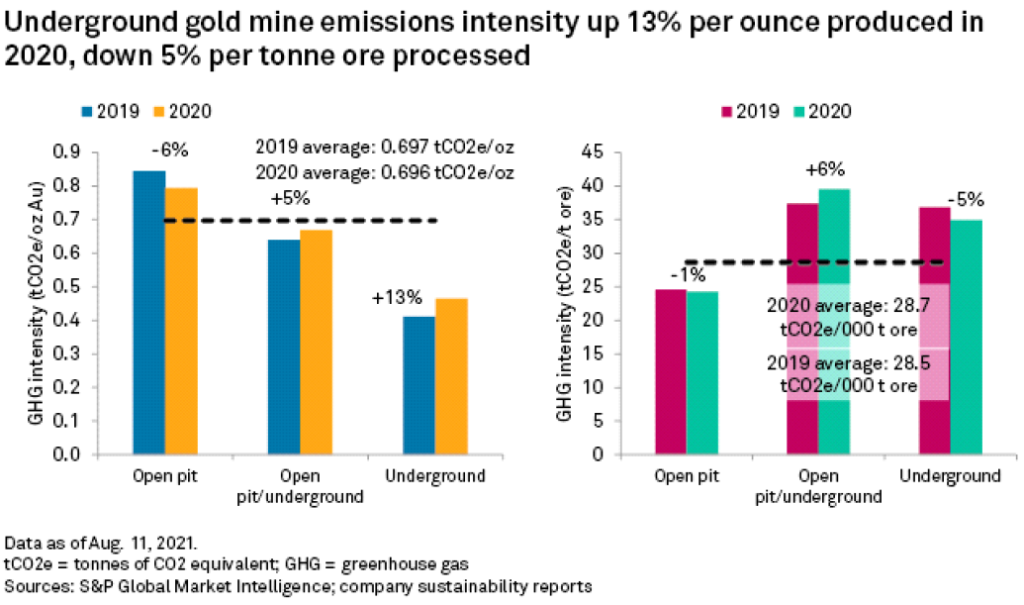Gold emissions unaffected by last year’s lockdowns – report
The study concluded that in general, the per-tonne emissions intensity remained stable overall.
The research made a year-over year comparison of emissions. Mining grades declined in 2020, but despite some fluctuations in actual emissions, that drop in grade led to a drop in gold output, which caused a drop in per-ounce emissions intensity.
Another key finding was the negligible change in emissions, divided by less gold, which gives a bigger value in tonnes CO2e per oz.
Supporting that somewhat more-stable nature of open pits, grade didn’t change by much at open pit mines. In fact, underground mines’ per-ounce intensity increased by 13% when the figure dropped at open pit operations.

The study concluded that in general, the per-tonne emissions intensity remained stable overall.
“Lockdowns did occur in a number of regions in 2020 but overall, they didn’t cause much change in terms of emissions intensity of a project,” says the report’s author, metal and mining research analyst Christopher Galbraith.
“A period of lockdown might have caused a drop in output, but the emissions are coming from operating the mines. During the lockdown, the equipment and the mills were shut down, therefore the emissions would decline anyway.
“A drop in emissions divided by a lower output (or throughput for that matter) can just as easily yield the same emissions intensity.”
According to S&P, the push to reduce carbon emissions from gold mining remains at an early stage. Given the scale of their operations, the largest producers have the largest capacity to upgrade their operations to reduce their environmental impact.
Most of the top producers are said to be currently upgrading facilities to reduce their dependence on fossil fuels in the transition to renewable energy sources, or at the least to transition to cleaner fuels such as by shifting from coal-fired plants to natural gas.
The top five gold producers, Newmont, Barrick Gold, AngloGold Ashanti, Polyus and Kinross, accounted for 53% of the emissions evaluated in the study and 56% of the gold output.
Each has committed to reducing emissions by 20 to 30% in accordance with the 2016 Paris Climate Accord.
If those top five producers reduce their emissions by an average of 25% by 2030, and assuming they process a similar amount of ore as they did in 2020, emissions will decrease from 27 tonnes CO2e in 2020 to 20 tonnes CO2e in 2030, per thousand tonnes of ore processed.




